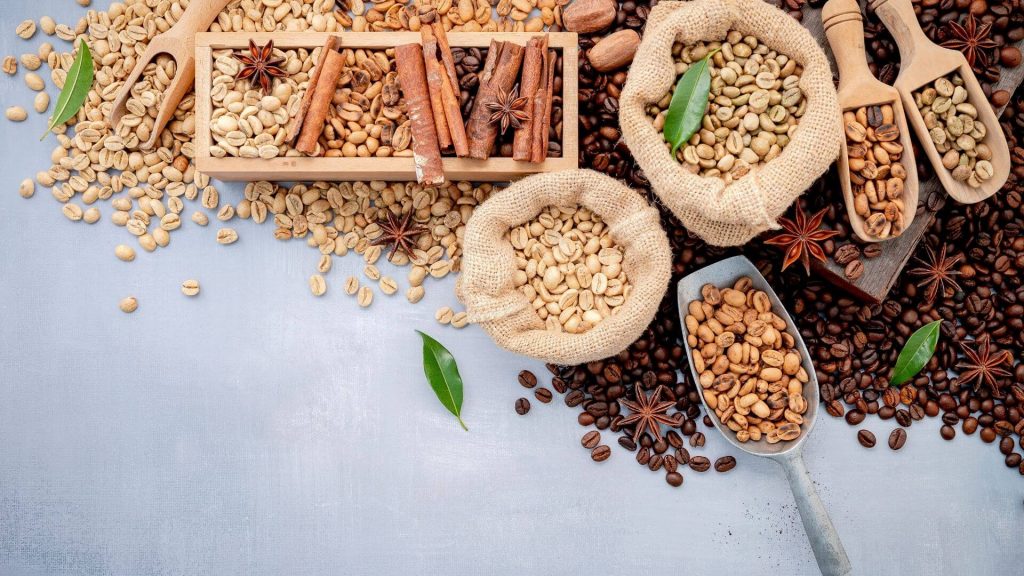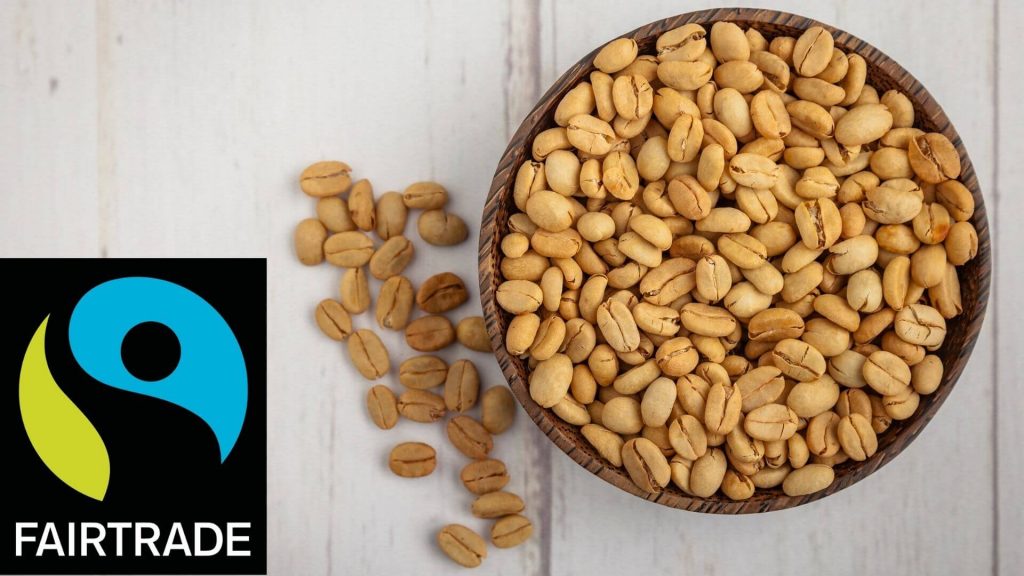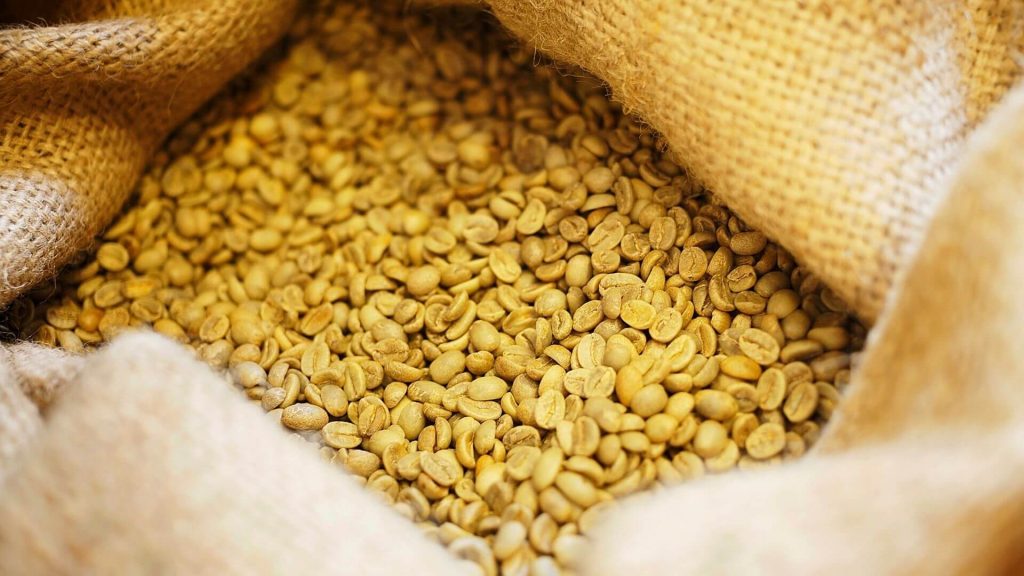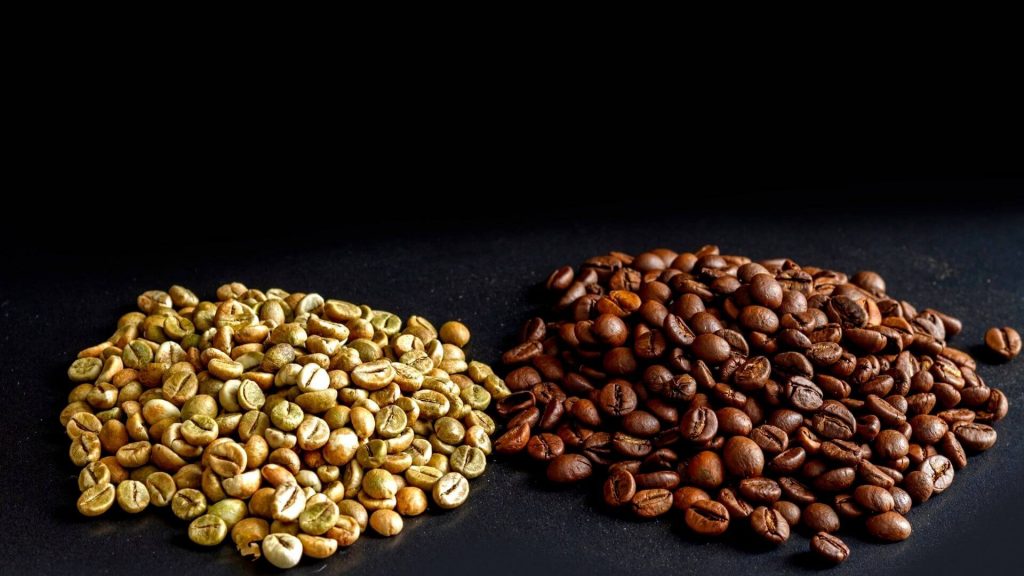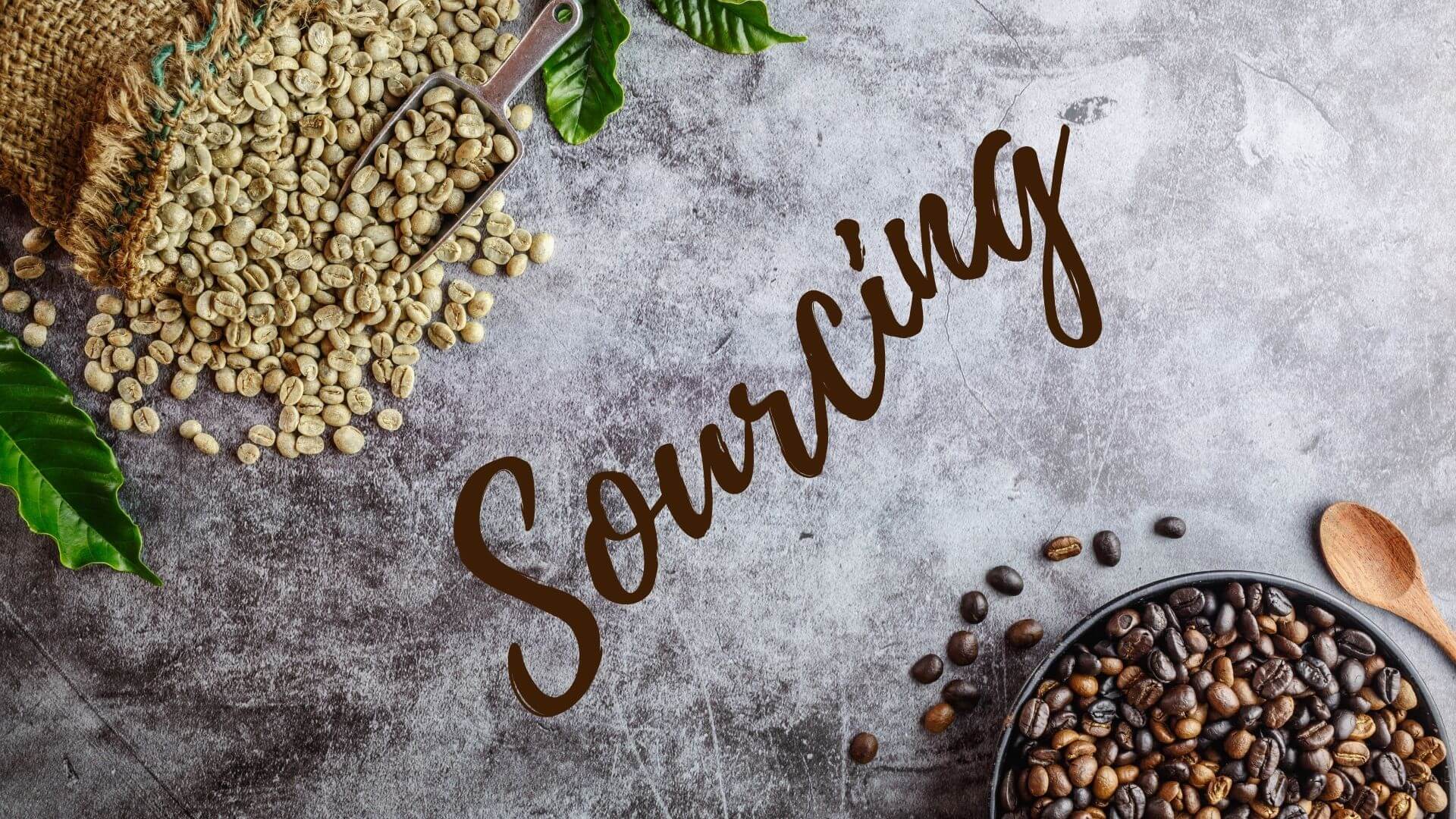
For many businesses, sourcing is always a top issue that must be addressed first. Companies looking for sourcing green coffee beans will also have several inquiries to ask to deliver the ultimate optimal choice. So, what should you look for when selecting the best green coffee supplier? Join us in discovering answers to supply questions in your coffee business.
What are your options?
Type of coffee beans
Arabica and Robusta beans account for the vast majority of global coffee consumption. Arabica is the major bean, accounting for around 75% of global supply, with Robusta accounting for 25%. In terms of flavor and application, arabica is frequently regarded as a superior bean due to its smoother, more bean-like flavor. Robusta is less refined than arabica, has a more pungent and more bitter taste, and contains more caffeine. However, it is the ideal bean for espressos due to its superior crema.
In addition to the two purebred coffee kinds mentioned above, you can broaden your options with other exceptional strains such as:
– Moka: Moka is also known as the “Queen of Coffees.” No one can forget the passionate sweetness that this coffee provides with a particular flavor. Yemeni coffee from Mocha
– Cartimor: A coffee hybrid of Timor and Caturra (Timor was bred from Arabica and Robusta coffee). Furthermore, Catimor coffee is also known as T8667 (as it is known in Central America) to differentiate the superior and more robust Catimor coffee variety from other varieties. They are also thought to have a sensual and pleasant scent.
– Cherry coffee (also known as jackfruit coffee) has a high output and is resistant to pests and diseases. Cherry coffee is divided into two types: Liberica and Exelsa. The coffee beans are yellow, lustrous, have a subtle aroma when brewed, and have a mild sour flavor, creating an incredible calming sensation.
– Culi coffee, also known as Peaberry (Caracol in Spanish), has huge, glossy spherical seeds. The spherical form of their beans distinguishes compounds. Culi coffee has a bitter taste, a pleasant scent, and a high caffeine level and is served in black water.
Trade versus Specialty
Commercial and specialty crops are another distinction for sourcing green coffee beans. Commercial crops are low-cost, mass-produced coffee beans, such as those used in instant coffee makers or famous in the first wave of coffee, such as Folgers or Maxwell House. On the other hand, specialty coffee refers to higher-value handcrafted coffee beans.
Furthermore, green coffee suppliers are separated into two categories: fair trade and direct trade, which also influence the cost and quality of your supply.
Fairtrade
When a product is manufactured under a trading partnership to create better justice in international trade, it is referred to as fairtrade. In the case of coffee, fairs contribute to sustainability by improving trading terms and circumstances for coffee producers. Third parties must certify farms and demand a fee for this certification, which adds another middleman to the chain and creates a barrier to entry for small farmers. I’m unable to pay the price.
Direct trade
When roasters buy directly from farmers, this is known as direct commerce. By eliminating all middlemen, farmers can receive a larger share of the income generated during the production process, and buyers can have better traceability (important for producers). It can also help with sustainability because roasters can help farmers expand by passing on more money.
It is vital to highlight that fair trading must be validated by an independent organization, whereas live trading does not. Instead, it is dependent on the policies of each seller. Here’s a link to a helpful article with more information on the matter.
Sourcing green coffee beans for your business
Once you have a clear grasp of your requirements, you must identify the elements to consider to conduct an evaluation and select a quality supply appropriate for your organization.
Grain quality evaluation parameters
The size of the grain
People will classify coffee beans to achieve homogeneity of coffee beans before roasting and to control market values. The most common floor kinds are 17/18, 15/16, and 13/14. The meaning of the above measure is its ratio per 64 parts of an inch. Floor 18 means 18/64 inches, and the unit of measurement is 7.1mm. Likewise, 16 floors are 16/64 inches, or 6.3mm in mm.
Humidity
Coffee beans have a 9-12.5 percent safe moisture content. Mature coffee beans have an average moisture level of 45-55 percent. After preliminary processing and drying, the moisture content will return to 10-12 percent. The International Coffee Organization recommends that green coffee beans be humidified between 8 and 12.5 percent.
The grain defect rate
Green coffee contains numerous flaws, some of which are more visible than others. There are seven different categories of marks that can be mentioned: Dried Pod, Insect Damage, Floater/bleached, Broken, Chipped, and Shell.
Altitude
The height factor determines the consistency of coffee beans, dividing them into soft and firm categories. Professionals have used the following terms to describe the texture of coffee beans since then:
- Strictly Soft Bean (SSB) and Soft Bean (SB): less than 1,200m above sea level
- Hard Bean (HB) or High Grown (HG): 1,200 – 1370 meters.
- Over 1,370m, Strictly Hard Bean (SHB) or Strictly High Grown (SHG).
Cupping – evaluate the taste of the seeds
Coffee sampling, often known as tasting in the business, is about feeling the coffee rather than quantifying it with tests and measures. Tasting has long been an essential social ritual in specialty coffee, and it is now practiced all around the world. Many factors influence the flavor of a coffee bean, including origin, kind, growing area, and processing method. So, in addition to the look and bean evaluation signs, tasting is vital for determining which coffee source to use. That is also why green coffee providers are always willing to provide consumers with samples before bargaining.
Coffee tasting evaluation factors include:
Aroma (Aroma / Fragrance) shows the coffee’s quality.
The aroma of coffee is its most appealing feature. But that special something is only available for a limited time. This is because aroma molecules in the air diffuse very quickly. As a result, the characteristic fragrance element has a significant impact on the quality and value of coffee.
Flavor is the expression of coffee’s quality.
Taste refers to the total impression formed by smell and taste after tasting coffee. The flavor molecules released in the palate combine with taste to provide the majority of our impression. So, even though there are just five essential flavors: salty, sour, sweet, bitter, and brackish, we can identify caramel from chocolate or orange from lemon due to the combination of scent groups.
Positive smells group: Succulent tropical fruit with big seeds; a collection of oranges and lemons; herbs and flowers; nuts and cereals; chocolate with caramel.
Negative smells group: The aromas of fermentation, medicinal, raw (green grass), and salty foods
Considerations when sourcing green coffee beans
know, want, says, get, customers, roaster, need, start, sourced, importer
Quality assurance and consistency (coffee bean)
Consistency is critical in any business. It would help if you assured consistency in quality and quantity for the coffee supply you seek. Harvest months varied greatly between coffee-producing countries. The majority of countries only have one harvest per year. As a result, you must grasp the seasonal characteristics of the coffee growing area you chose to comprehend your partner’s supply potential. Look for brand partners who offer a credible supply of green coffee that is substantial enough to warrant your trust.
Order quantity: When should you order?
There are no industry standards for how much to order at once. It will be determined by your requirements and the supplier’s supply capacity. If you are a small to medium-sized buyer, two orders per year may be sufficient, as long as each order does not exceed the value of one shipping container.
If your standard order exceeds one container, you could order as frequently as feasible to fill a container. However, as previously noted, one thing to consider is the seasonality of the nation from which you choose to import. Being aware of reduced harvest times is vital when planning your orders and how much you order, as you may run out of seeds in the months leading up to the next harvest.
Price negotiation: How is the price calculated?
The price per kilogram can vary greatly depending on whether you purchase specialty crops or commercial commodities or whether you choose fair trade or direct trade. The National Federation of Coffee Growers (FNC), an association of coffee growers, sells the majority of commercial coffee crops. FNC establishes a price per “Carga” (125kg of main mill parchment), which is listed on their website and changes with the market.
On April 8, 2020, for example, the price is COP 1,200,000 per “carga,” which is $309 USD for 125kg of parchment, or $2.47 per kg. Calculating the average parchment weight yields an absolute minimum price of $3.37 per kilogram of green. It is the bare minimum that the exporter will pay the farm provider. However, extra fees must be applied before the supplier can compute a price. Domestic shipping, packing, bank fees, taxes, and international shipping are all included.
Choosing a long-term relationship with a partner will provide you with stability regarding the number and quality of commodities. Contracts with a long cycle always have a reasonably agreed price and are more favorable to both buyers and sellers.
Keywords: dear coffee buyer, green coffee buyer, buying green coffee, buy green coffee, coffee sourcing price, colombian green coffee, green coffee choices, gear beans roasting, commercial green coffee, beans roasting brewing, green beans, green coffee bean, unroasted coffee beans, source green coffee, green coffee sourcing, coffee roasters
Related Posts:
Espresso Makers – Top International Brands By Country
The best wholesalers of coffee beans in Asia by country
Roasting Coffee Best Practices
Conferences
THOSECOFFEEPEOPLE. Sourcing Green Coffee Beans – A Buyer’s Guide
KLDI’S COFFEE. COFFEE SOURCING
know, want, want, want, want, information, get, farm, start, small, buyer, source, roasters, roasters, roasters, roasters, roasters, roasters, quality, quality, quality, quality, quality, best, need, need, need, need, different, different, different, different, customers, customers, customers, customers, roaster, roaster, roaster, roaster, coffee roasters, coffee roasters, many, roasting, roasting, roasting
